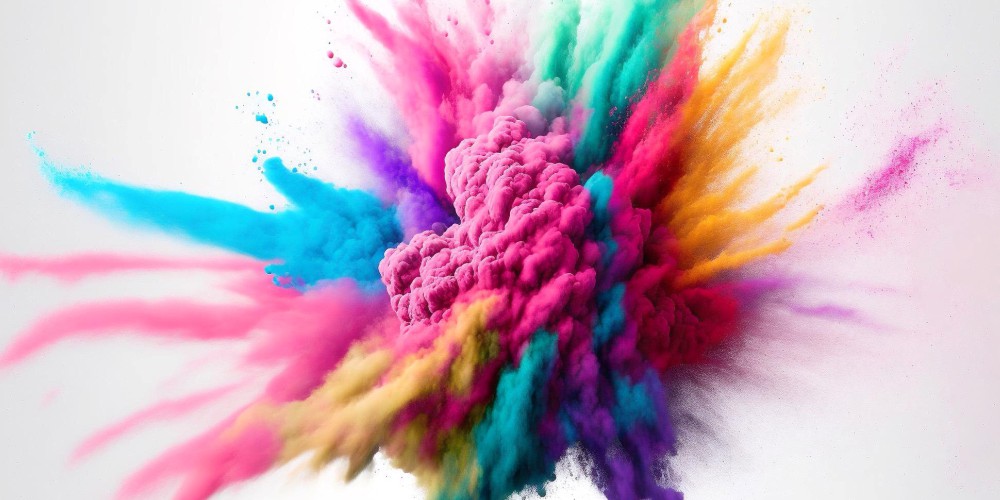Colors in Printing: Colors play a pivotal role in the printing world, acting as the silent narrators of your visual story.
They have the power to stir emotions, deliver messages, and infuse vitality into your designs.
Grasping the essential rules of colors in printing is pivotal for those aiming to produce vibrant, eye-catching results.
Whether you’re navigating the realms of design as a seasoned professional or a fervent print enthusiast, these insights will empower you to excel in the nuanced art of color usage in your printing projects.
RGB vs. CMYK: Color Modes
Distinguishing Between Digital and Print Colors
The journey into color mastery begins with differentiating RGB (Red, Green, Blue) and CMYK (Cyan, Magenta, Yellow, Key/Black) color modes:
- RGB: Primarily used in digital contexts, such as monitors and cameras, the RGB mode combines light in red, green, and blue hues to create a broad color spectrum. Perfect for digital creations, RGB doesn’t translate well to the print medium.
- CMYK: The cornerstone of printing color mode, CMYK employs four ink colors (cyan, magenta, yellow, and black) to reproduce a comprehensive color range on paper. For print designs, transitioning your creations into CMYK mode is crucial to achieving color fidelity.
Achieving Color Accuracy in Printing
Transitioning your designs from screen to print demands a deep understanding of these color modes. The shift from RGB’s luminous color spectrum to CMYK’s ink-based color production can significantly impact your design’s appearance.
Opting for CMYK from the start ensures your colors translate accurately from digital to print, maintaining the integrity and vibrancy of your designs.
The Critical Role of Color Calibration
Ensuring Consistency Across Devices
Color calibration emerges as a critical step in safeguarding color consistency throughout your design and printing workflow.
This process entails fine-tuning your monitor and printer settings to achieve a uniform color representation:
- Monitor Calibration: A calibrated monitor ensures that the colors you see during the design phase closely match the final printed product.
- Printer Calibration: Adjusting printer settings guarantees that the output faithfully reproduces the intended colors, minimizing discrepancies between digital designs and printed materials.
Investing in Calibration Tools
To navigate the complexities of color calibration, investing in professional calibration tools is advisable.
These devices adjust your equipment to a standard color reference, bridging the gap between digital designs and their printed counterparts, ensuring your colors remain true from screen to paper.
Navigating Color Profiles for Optimal Results
Understanding Color Management
Color profiles play a pivotal role in color management, dictating how colors are rendered across different devices and printing systems:
- Digital Color Profiles: sRGB and Adobe RGB profiles govern color interpretation in digital devices, ensuring consistent color display across various screens.
- Print Color Profiles: Profiles like SWOP cater to the CMYK printing process, optimizing colors for the specific requirements of print production.
Collaborating with Printing Services
A close collaboration with your printing service provider can demystify the complexities of color profiles.
Sharing your design’s color profile with your printer ensures that the final product mirrors your original vision, with colors rendered as intended across diverse printing platforms.
Selecting the Perfect Color Model
Tailoring Your Choice to the Project
Your project’s nature dictates the choice between spot and process colors, each suited to different design requirements:
- Spot Color Printing: For projects necessitating specific hues, spot colors offer unmatched precision. This method utilizes pre-mixed inks to replicate exact colors, ideal for brand logos and elements requiring consistent coloration across various materials.
- Process Color Printing: Complex designs benefiting from a wide color range thrive on the process color (CMYK) model. This approach combines cyan, magenta, yellow, and black inks to create a rich spectrum of colors, accommodating intricate designs with nuanced color transitions.
Optimizing Designs for Print
Understanding these color models enables designers to optimize their creations for print, ensuring each element—from logos to detailed backgrounds—is represented with clarity and vibrancy. Matching the color model to your project’s needs can enhance the overall quality and impact of your printed materials.
Understanding the Boundaries of Color Gamut
Navigating the Spectrum of Printable Colors
The concept of color gamut is crucial in understanding the limitations and possibilities of printed colors.
This term refers to the range of colors a particular device or process can reproduce, highlighting the variance between on-screen colors and their printed counterparts:
- Digital vs. Print Color Gamut: While digital devices can display a wide array of vibrant colors, the printable color range is inherently more restricted. Acknowledging this discrepancy is key to setting realistic expectations for your print projects.
- Adjusting Designs for Print: Adapting your color choices to fit within the achievable gamut of your printing method ensures that your final product remains true to your vision. This might involve modifying overly vibrant digital hues to fit within the print-friendly spectrum, ensuring color integrity and impact.
Maximizing Colors in Printing Impact Within Limits
An in-depth understanding of your chosen printing method’s color gamut allows you to navigate its limitations strategically.
By tailoring your color choices to align with what’s realistically achievable in print, you can maximize the visual impact and fidelity of your printed materials, ensuring they capture and convey your intended messages and emotions effectively.
By embracing these guidelines and considering the intricate relationship between color choices and printing capabilities, designers can unlock the full potential of colors in printing.
These strategies not only enhance the visual appeal of printed materials but also ensure that they accurately reflect the designer’s vision, achieving a harmonious balance between creativity and technical precision.



